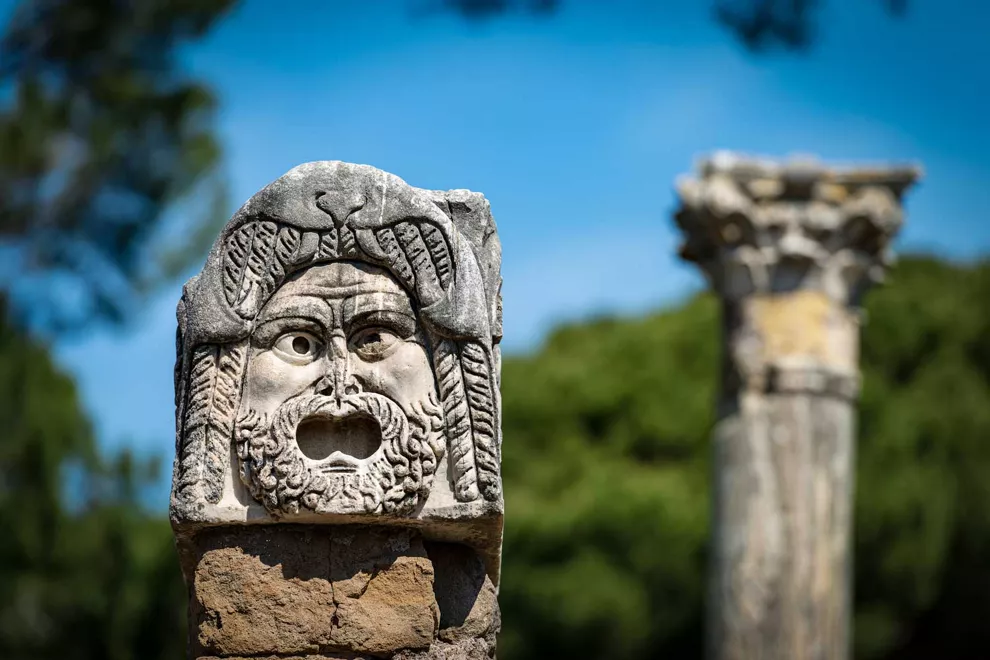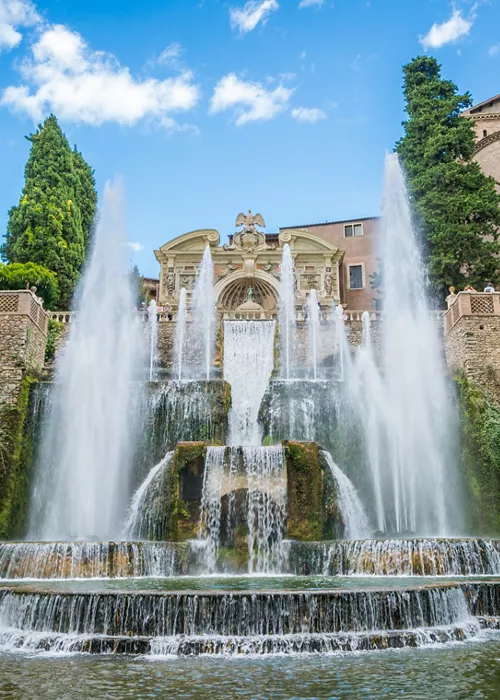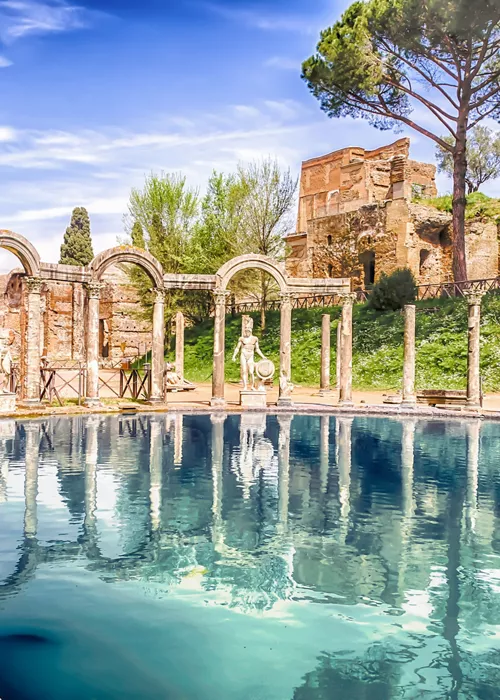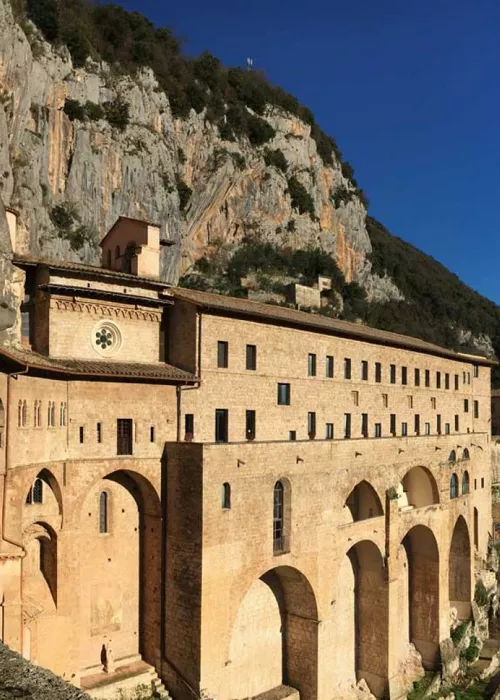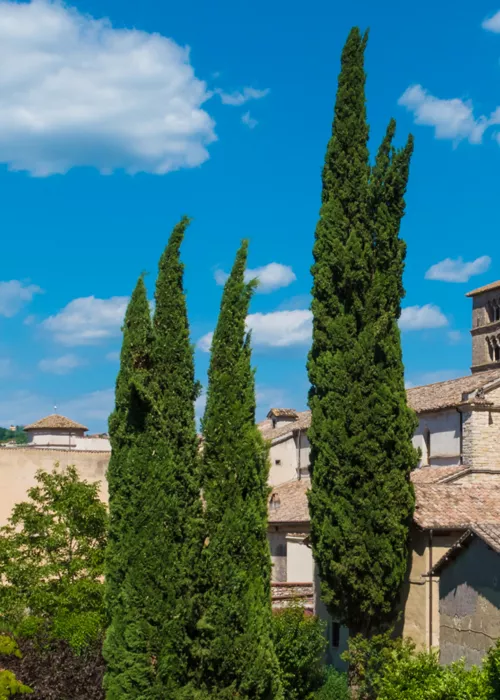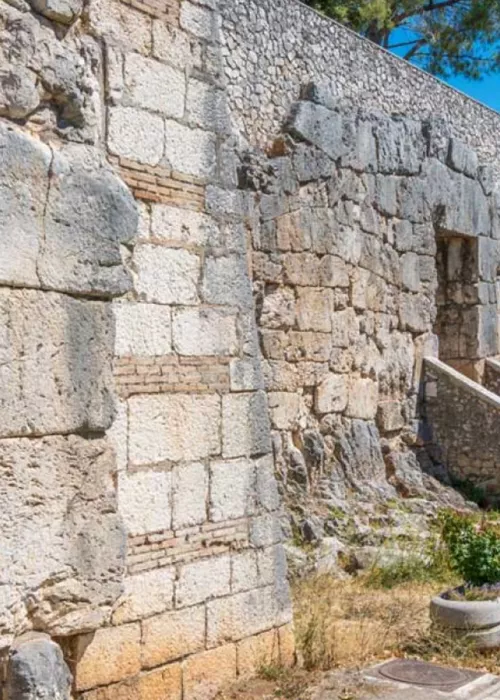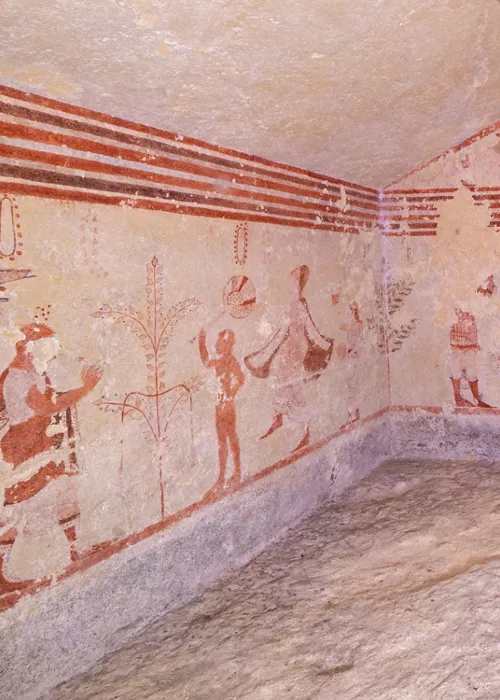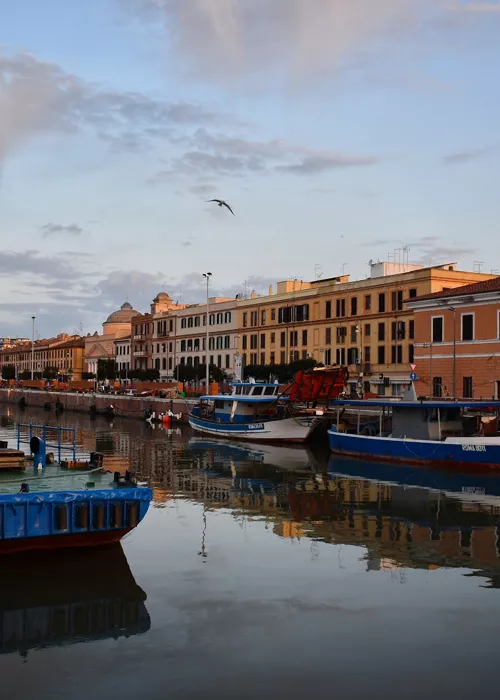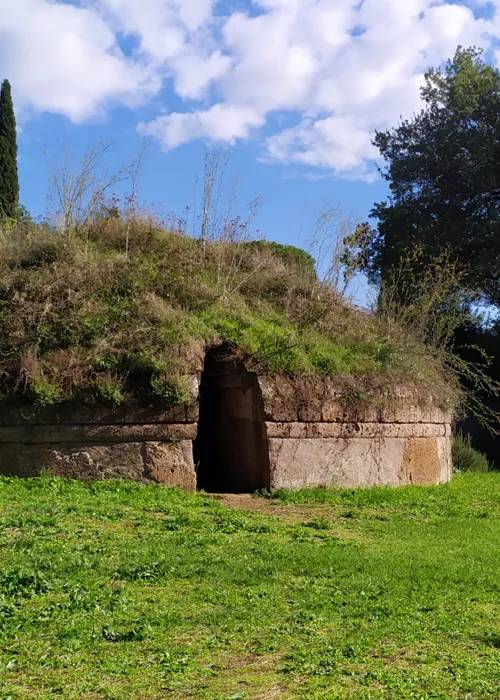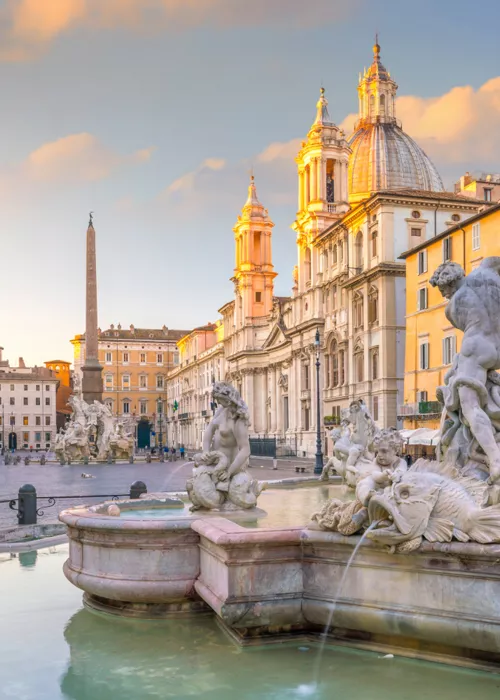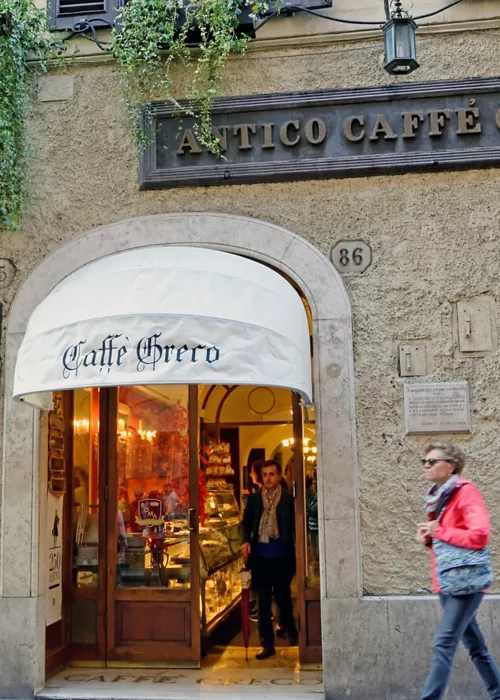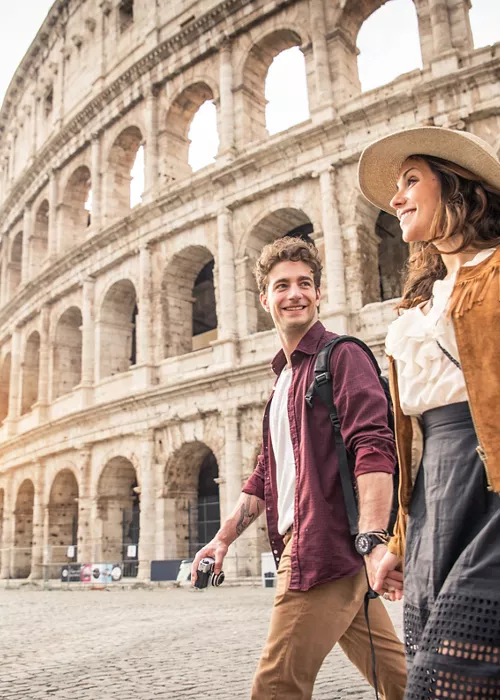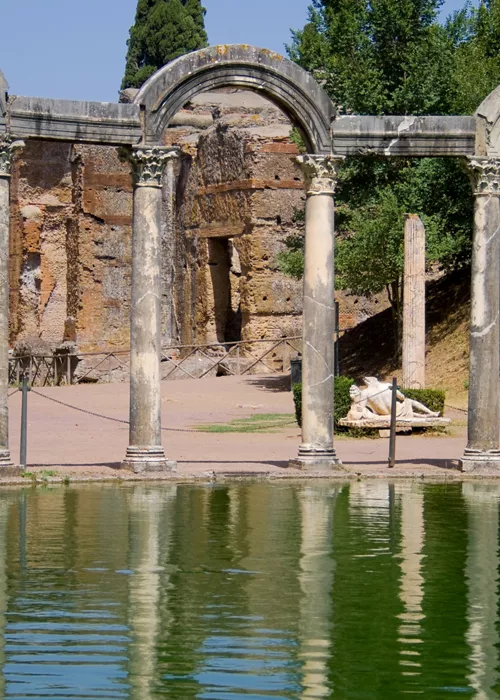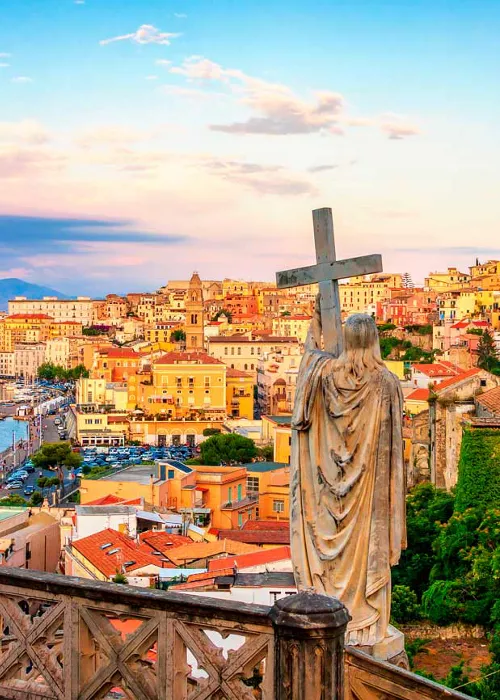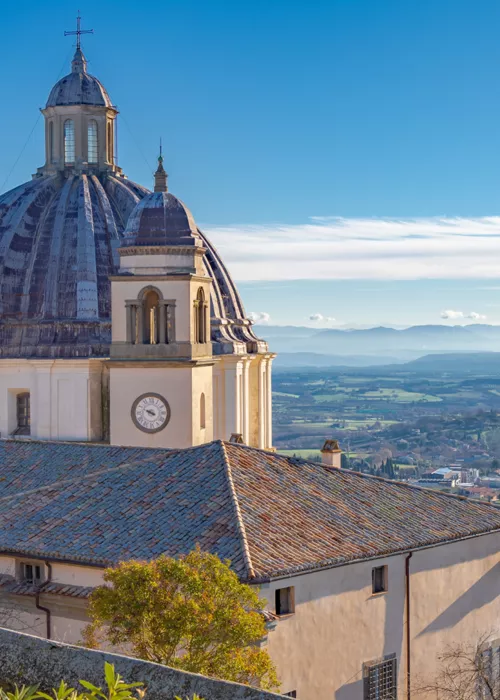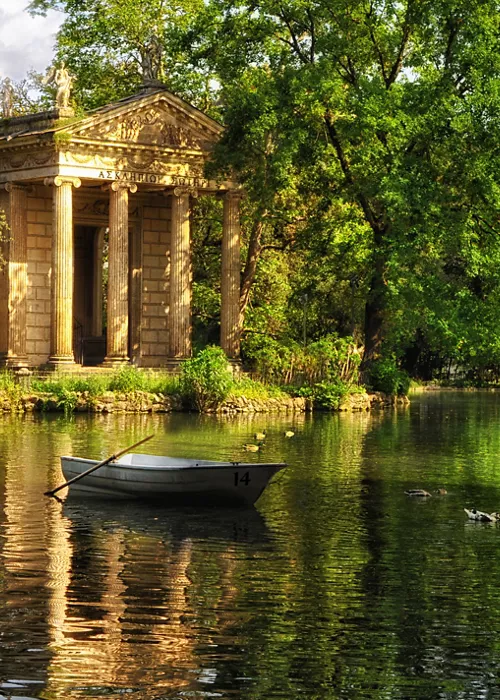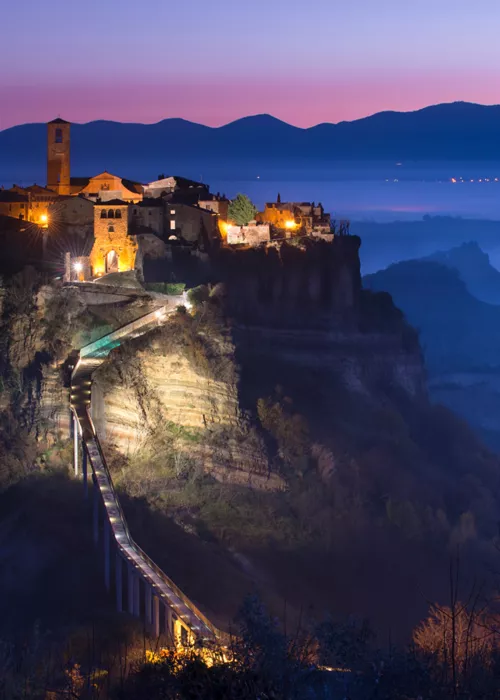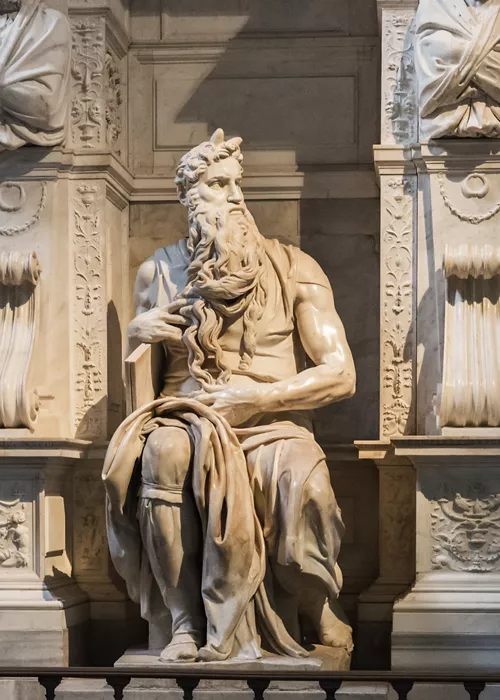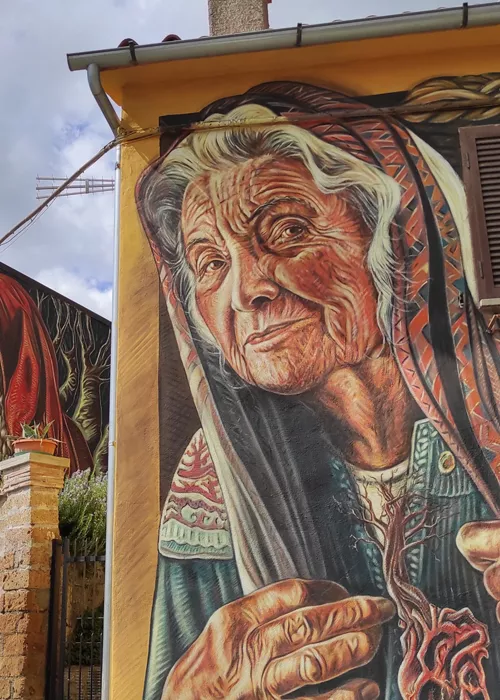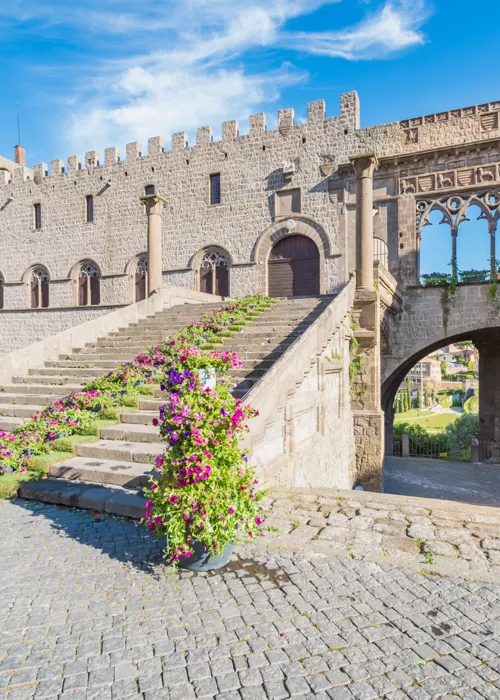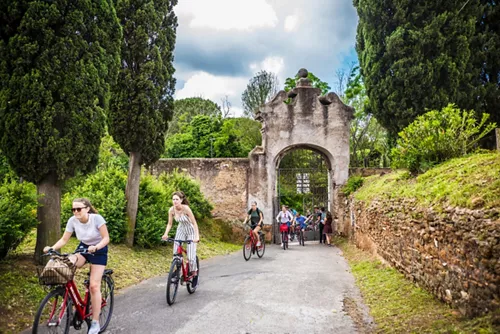Seven sites of art, history and culture just one hour from Rome
5 minutes
Rome is a unique city, rich in history and beauty, and its surroundings are just as wonderful. If you plan to take a trip outside the city, there are many not-to-be-missed places only a stone's throw from the capital. A heritage and an ancient tradition well-worth knowing, for a day or a weekend dedicated to culture.
Villa d'Este and Hadrian's Villa
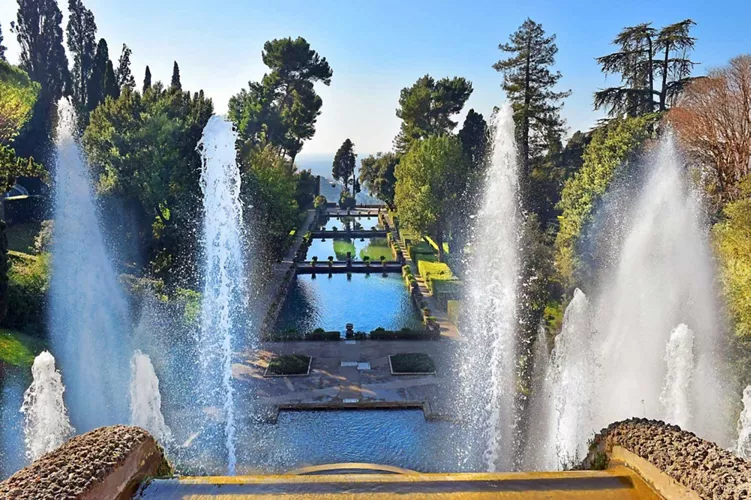
Two UNESCO World Heritage sites just 35 km from Rome
Villa D'Este became a UNESCO World Heritage Site in 2001. Thanks to its imposing beauty, it has become one of the symbols of the Italian Renaissance. The concentration of fountains, caves and ornamental water features in Villa d'Este made it a reference model for European Mannerist and Baroque gardens. The outcome of the commission by Cardinal Ippolito II d'Este and the genius of painter and architect Pirro Ligorio who designed the garden, Villa d'Este is a treasure trove replete with masterpieces by great Italian artists such as Gian Lorenzo Bernini, who created the waterfall of the Fountain of the Organ and the Bicchierone Fountain. A 'must' for anyone looking for a relaxing break in contact with nature, art and history or simply a romantic place for a stroll with someone you love. If you'd like a taste of what it was like to walk around imperial Rome, then Hadrian's Villa is the place for you. Built for Emperor Hadrian in 117 AD and named a UNESCO World Heritage Site in 1999, Hadrian's Villa is an archaeological complex that bears witness to the greatness of the Roman Empire. It is a unique open-air museum, where the archaeological area boasts a sequence of temples, theatres, statues, gardens and fountains, spas and pools. The broad spaces ensure an intimate and intense experience for visitors, face to face with a thousand-year history.
The Sanctuary of Sacro Speco
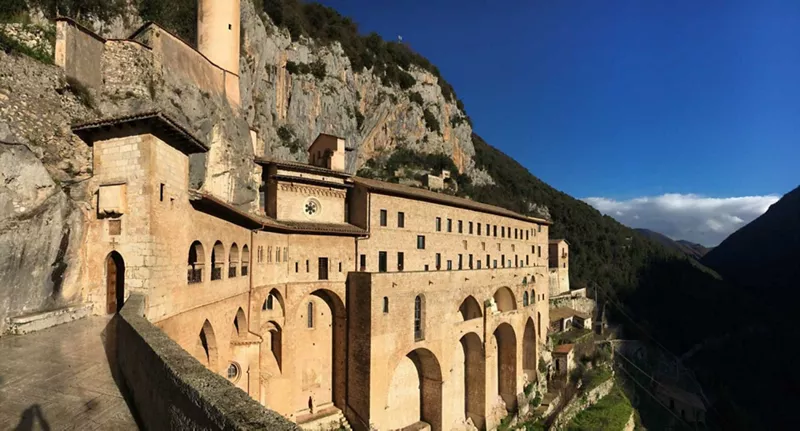
Set in the rock face of Monte Taleo, the Monastery of San Benedetto is a sanctuary where visitors can breathe a mystical and immensely spiritual atmosphere. It can be reached along St. Benedict's Way, which connects Norcia to Montecassino; it was the home of the hermit St. Benedict of Norcia and a par excellence symbol of spirituality: the Grotta di San Benedetto, a refuge for prayer and meditation. This trip out of the city is ideal for breathing clean, fresh air, listening to silence and enjoying an experience with a mystical, meditative character away from the chaos of the city. The site has a small shop where you can buy religious objects, artisan liqueurs and home-made honey.
Benedictine Abbey of Santa Maria di Farfa
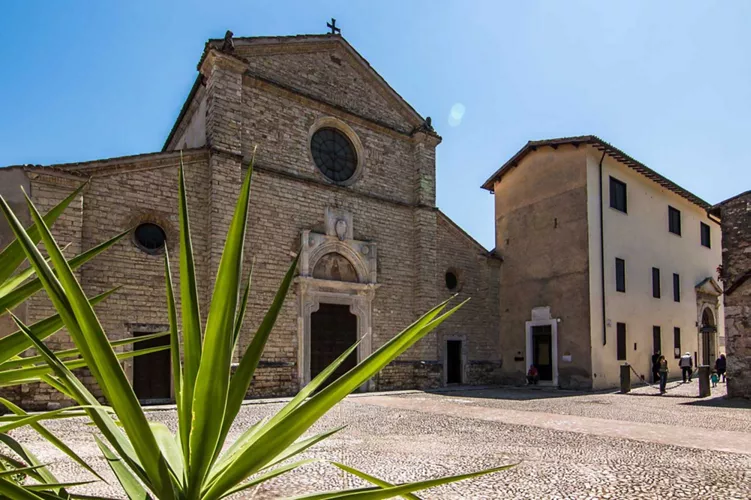
The Abbey of Farfa lies in the ancient lands of the Sabines, a place of silence and prayer surrounded by greenery in the heart of a village with a times-gone-by atmosphere. Declared a National Monument for its architectural and artistic beauty, it is a centre for culture and spirituality where you can find physical rest and inner peace. Visited every year by thousands of people, the Benedictine Abbey is a monastic and meditative experience. It is home to the Farfa Library, with more than fifty thousand volumes including Mediaeval manuscripts, parchments and ancient books which stand out as a fascinating link between past and present. The monastic herbalist shop sells craft products such as honey and liqueurs, while the small shops characterizing village life help complete a relaxing visit. A destination symbolising an escape from chaos, well away from the stress of everyday life
Acropolis of Alatri and the megalithic walls
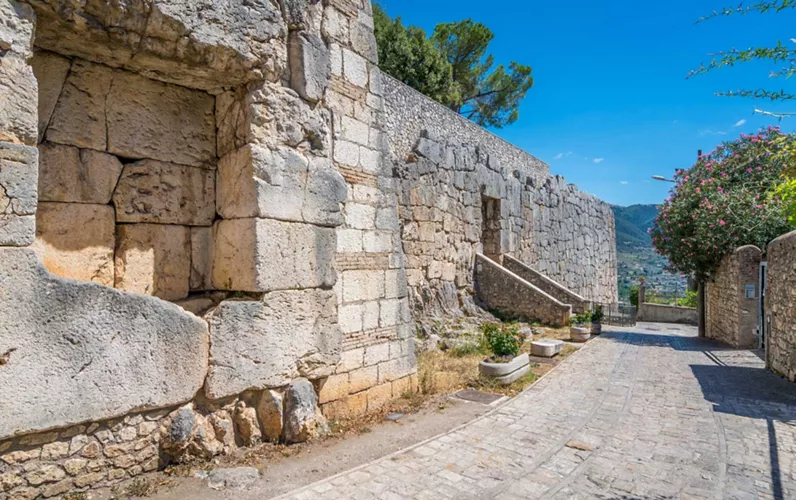
Its origins are still unclear: some claim that it is attributable to Mesopotamian populations, while others suggest that it came to life from a ray of sunshine and was built by a people of giants devoted to the God Saturn. Traditionally, the Acropolis of Alatri is also called the City of the Cyclops. An aura of mystery, myth and magic surrounds this place - considered to be one of the most fascinating in Latium. The megalithic walls embracing the perimeter of Alatri are still being studied today: perfectly interlocking megalithic blocks installed without the aid of lime or cement. Access to the acropolis is through the imposing Porta Maggiore (Main Gate), supported by an imposing monolithic lintel weighing 27 tons, and the Porta Minore (Minor Gate), a symbol of fertility. They take visitors into a world of Gods, mysterious stories and mythological figures. People who know the Acropolis of Alatri testify and perceive the presence of mystical vibrations characterizing its stones and structure, so much so that it has now become a landmark for the meditative arts and yoga.
Etruscan Necropolis of Cerveteri and Tarquinia
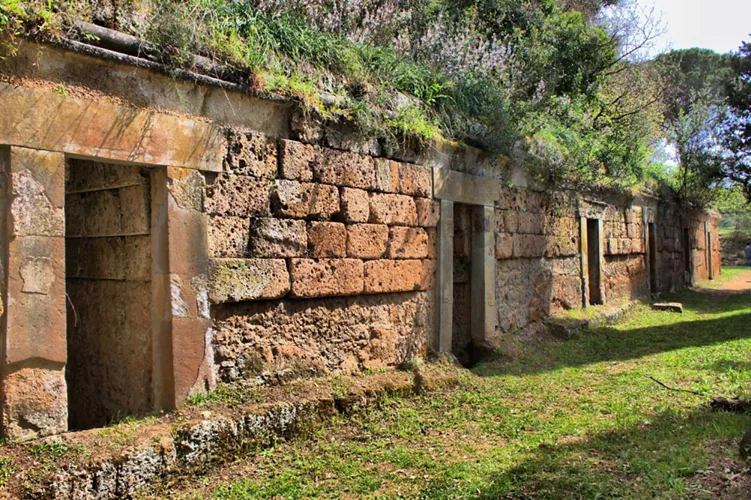
A journey through history to discover Etruscan civilization.
UNESCO world heritage sites, these two Necropolis are the finest historical testimony of the Etruscan civilization and faithfully reproduce the urban systems of this people, the only urban civilization of the pre-Roman era in Italy. The Necropolis of Cerveteri, also known as the Banditaccia, has numerous tombs and is organized around an urban logic that divides it into streets, squares and quarters where a complex of about 20,000 chamber tombs unfolds. The Necropolis of Tarquinia, also known as Monterozzi, occupies a site of 150 hectares and is the largest such complex ever to exist. Characterized by burial sites carved into the rock and numerous painted tombs, it is one of the greatest testimonies of the art, domestic life and history of the Etruscan civilization.
Ostia Antica
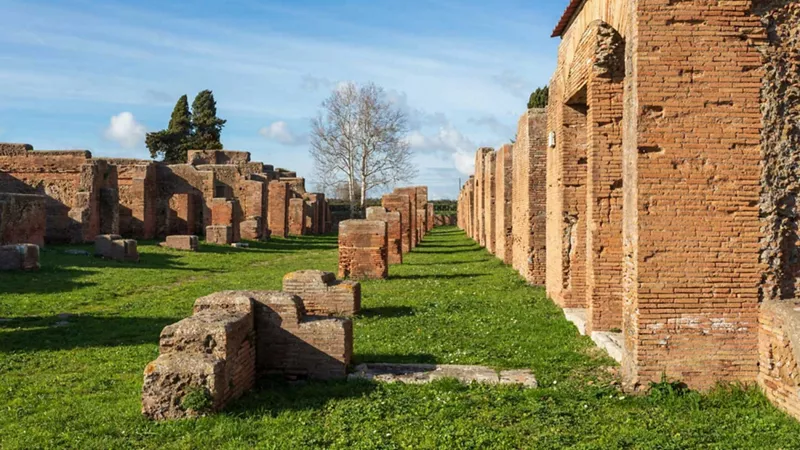
Rome was not built in a day and certainly a single day is never enough to visit the splendid archaeological complex of Ostia Antica, the main commercial port of the Eternal City. The bustle of goods and cultures still echoes in the tabernas (shops), the domus, the basilicas, the temples, the spas, the squares and, of course, the splendid theatre that is still used today for performances and concerts on warm summer evenings. Ostia Antica merits a trip of at least 2 days. It is an excellent blend of culture, relaxation and enjoyment - and is recommended for everyone, including families. The tourist offering is very broad and all kinds of very different experiences can be had. If you decide to take a trip out of town to visit Ostia Antica, there are some places that you must not miss.
- The archaeological area of Ostia Antica with the Imperial Ports of Claudius and Trajan and the Necropolis of Porto on Isola Sacra, are a journey through history that reveals Ancient Rome.
- Ostia Lido: a place to stop for people who love the sea, windsurfing and good food. Broad beaches for relaxation, seaside restaurants and spectacular sunsets awaits you!
- The pine woods of Castel Fusano: ideal for a stroll in the midst of nature or an enjoyable horseback ride.
- Fiumicino is only a few minutes from Ostia and is a great place for excellent lunches with freshly caught fish

